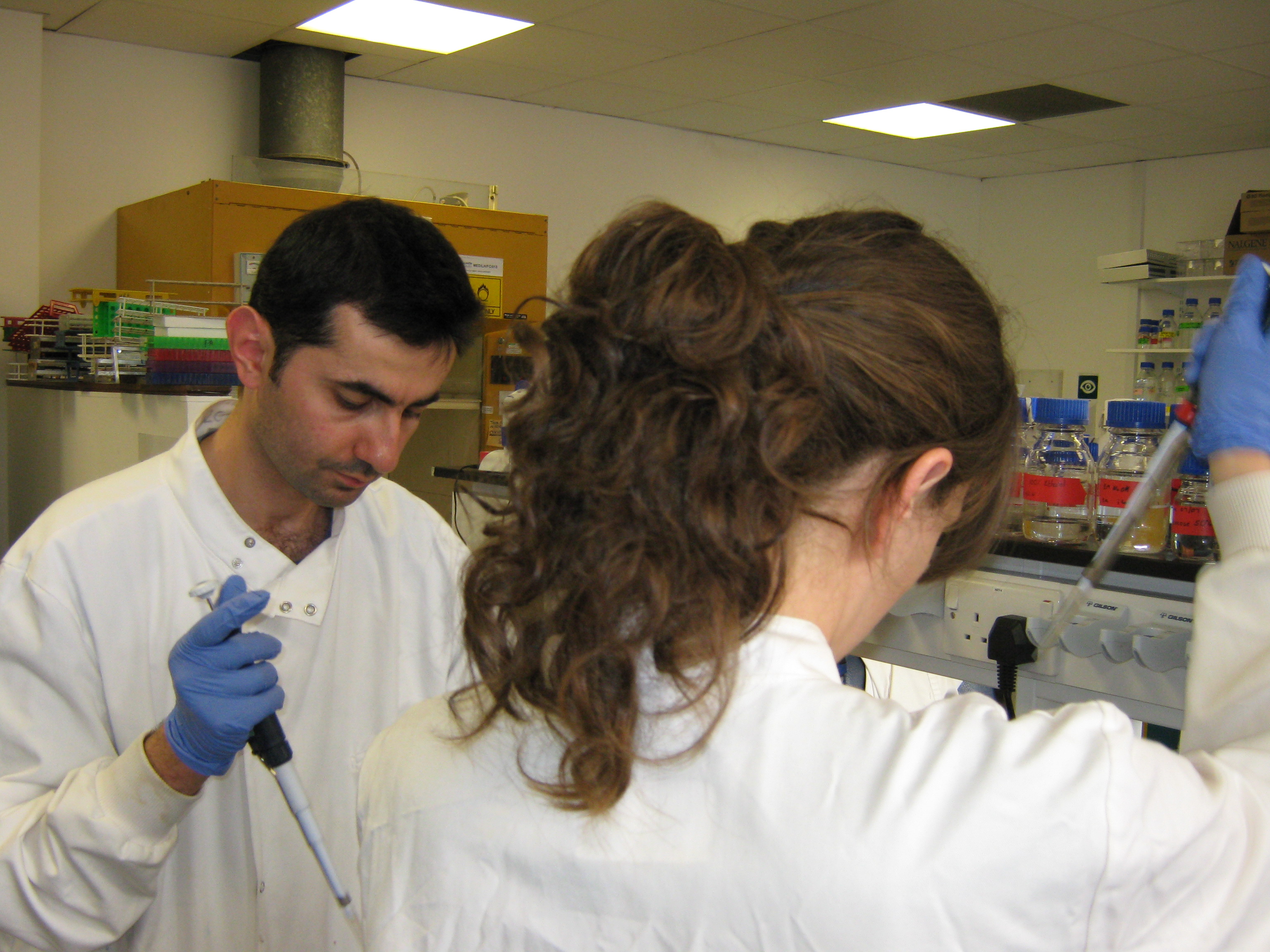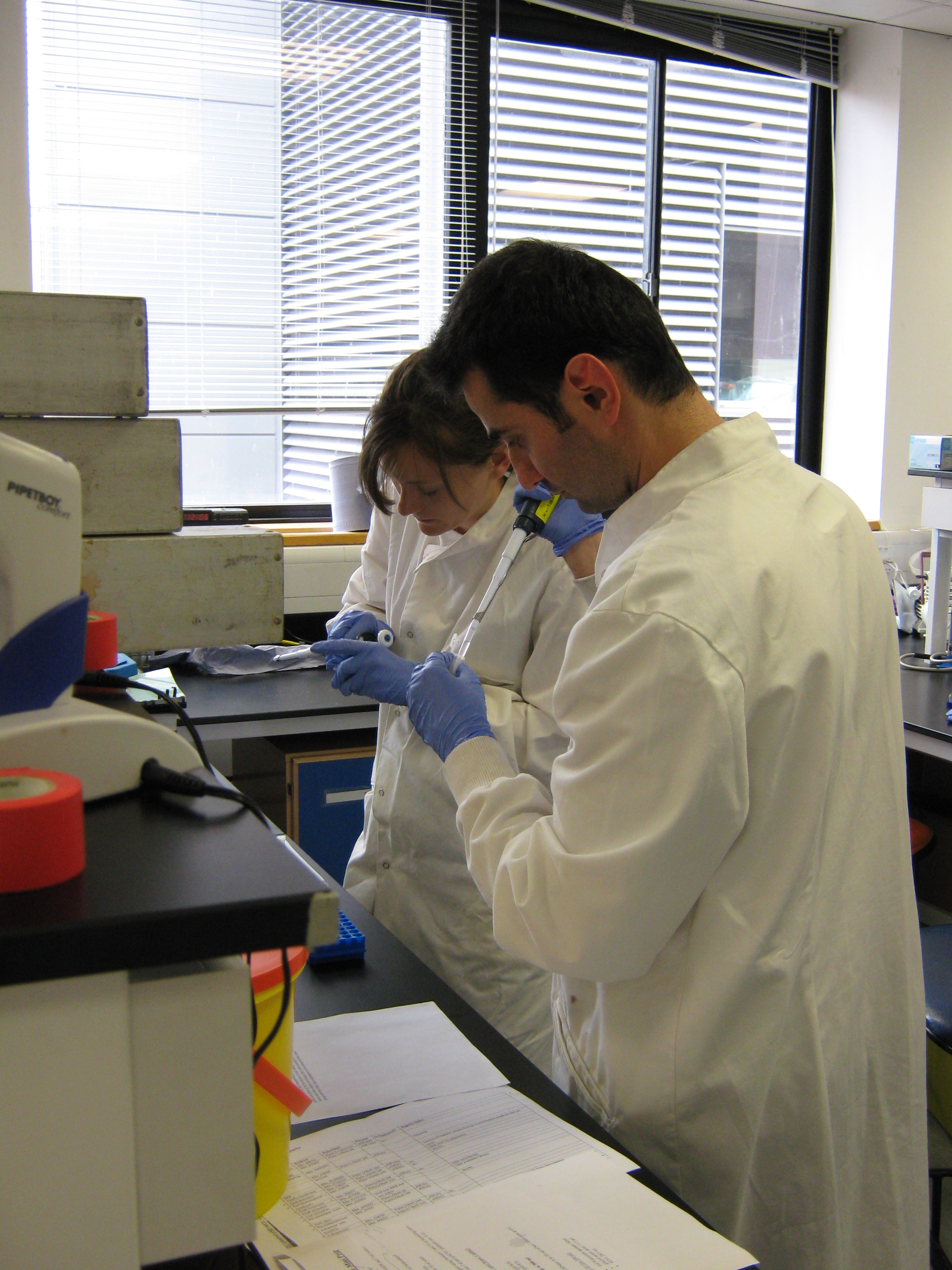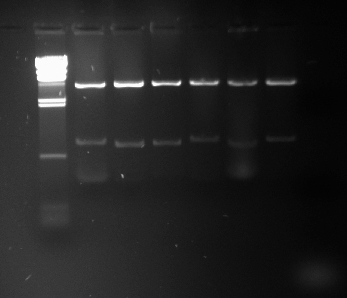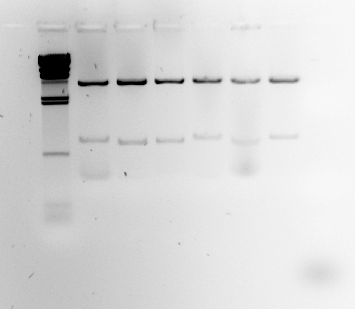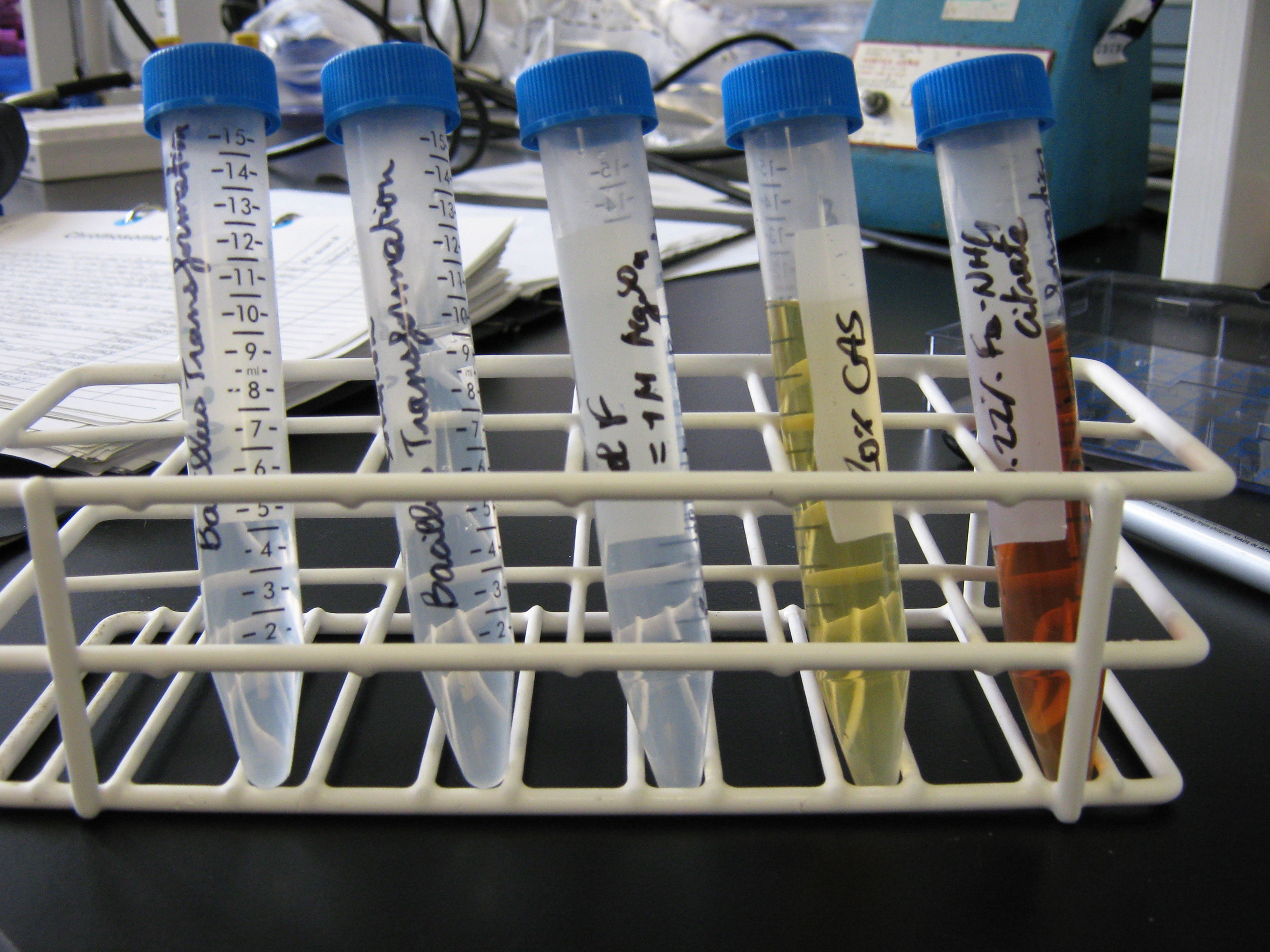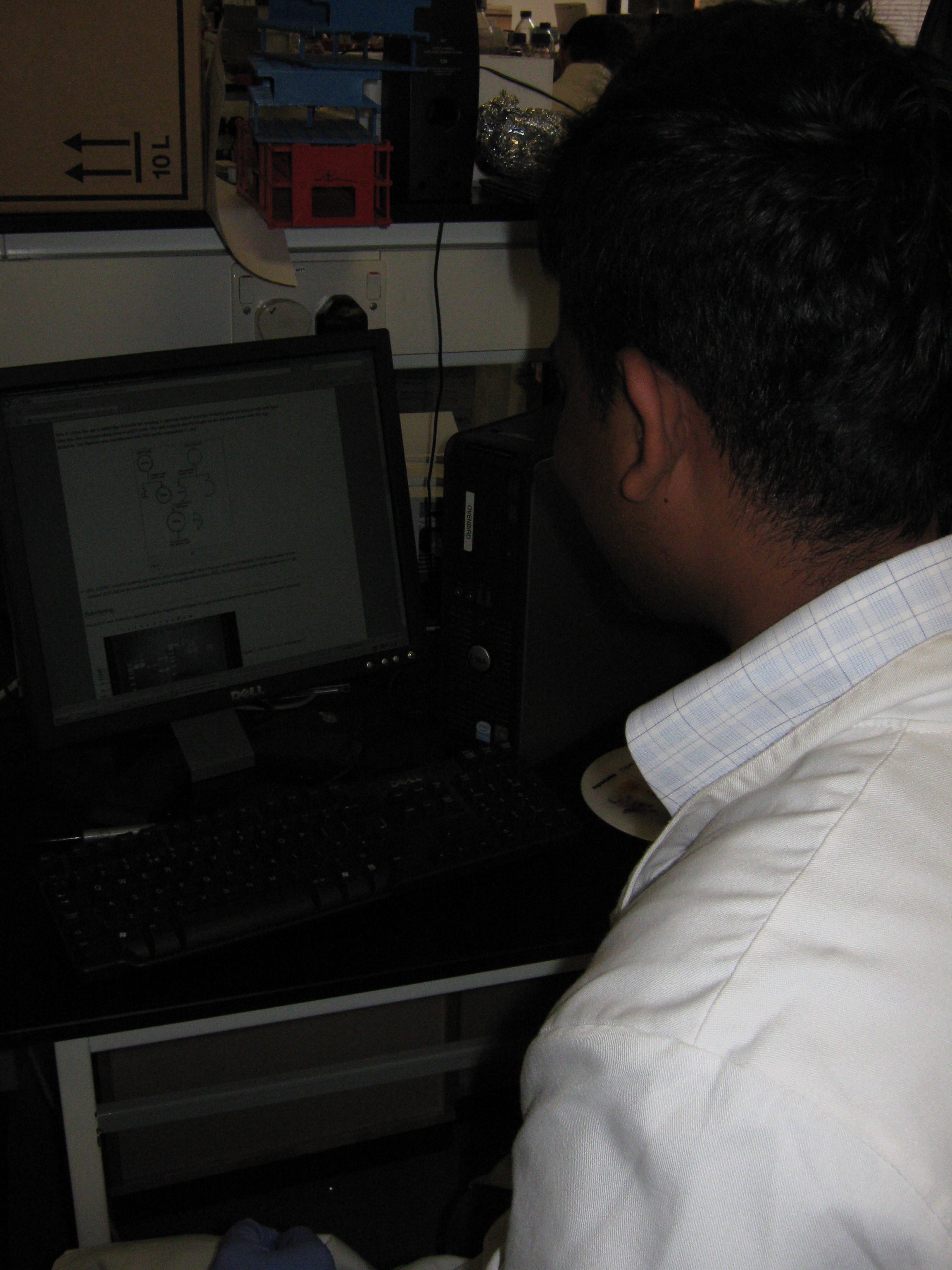Team:Newcastle/Labwork/5 August 2009
From 2009.igem.org
(→Metal Sensor Team) |
|||
| Line 2: | Line 2: | ||
{{:Team:Newcastle/Header}} | {{:Team:Newcastle/Header}} | ||
{{:Team:Newcastle/Left}} | {{:Team:Newcastle/Left}} | ||
| - | + | __NOTOC__ | |
=Lab Session 05/08/09= | =Lab Session 05/08/09= | ||
[[Image:Team Newcastle 2009 iGEM 05-08-09 IMG 0271.JPG|300px|center]] | [[Image:Team Newcastle 2009 iGEM 05-08-09 IMG 0271.JPG|300px|center]] | ||
Revision as of 22:30, 8 September 2009
Lab Session 05/08/09
Stochastic Switch Team
Today we needed to do a miniprep of the CinR (BBa_C0077) and CinI (BBa_C0076) biobricks that were put into an overnight culture in the shaking incubator yesterday. There were three cultures for each brick however we discovered that the labels had rubbed off from the tubes, so we decided to do restriction digests and run all 6 samples on a gel separately to determine their identities. As the BioBrick inserts both have similar lengths, we decided to run them on a 1.2 agarose gel to get the best resolution.
For the miniprep:
We followed the miniprep protocol for Prof. Aldridge's lab.
- We spun all 6 samples in 12 eppendorfs to make sure we had at least 3ml. Using 12 eppendorfs also meant that there was only one spin step. (e.g. 1A, 1B, 2A, 2B...)
- After adding solution one to both tubes we resuspended and added the tubes together again resulting in 6 samples. (Added all Bs to As)
- We used the Solution I + RNAse that had been ready made and put in the fridge.
- After spinning with solution III for 20 mins we pipetted the supernatant into a fresh tube and centrifuged again for 5 mins to ensure less protein and cell extracts were in the supernatant.
- After resuspending the final DNA pellet we froze the sample ready for restriction digest on the afternoon.
For the restriction digest:
We had 6 samples and therefore found it easier to make up 7X the mix we needed for the digest, and add 10ul each to 6 labelled eppendorfs, adding our DNA second. This way we did not have to make up the same solution 6 times. (we did 7X to make sure we had enough.) We used PstI and EcoRI restriction enzymes making sure that they were the last thing we added to the digest.
In order to make some 1.2 agarose we needed to make up some more 1x TAE from the 50x stock solution.
- We made up 1L using 980ml distilled water and 20ml 50x TAE in a measuring cylinder
- We weighed 2.4g of Agarose and added 190 ml of 1x TAE (we didn't have quite enough left but since have made up some more)
Running the gel
In order the identify the tubes and check if the experiments went right, we carried out gel electrophoresis.
- Each tube containing 20ul DNa solution was mixed with 4ul of buffer.
- We loaded 8ul of DNA ladder to the first well on the gel.
- We then loaded 20ul from the tubes in the order of 1,2,3,4,5,6
Results
We know that CinI is 702bp and CinR is 762 bp long. From the gel, it can be concluded that 1st, 4th, and the 6th columns are CinR, and 2nd, 3rd and 5th columns are CinI.
The cultures were then stored at -80C freezer.
Metal Sensor Team
- We filter sterilised the 40% glucose solution
- We went to Prof.Colin Hardwood's lab to get the materials in order to prepare the rest of the solutions
- We prepared the remaining solutions:
- 10ml tryptophane solution (20mg tryptophane + 10ml distilled water)
- 10ml sol F - 1M MgSO4 (2.46g MgSO4 + 10ml distilled water)
- 10ml 20% CAS solution (2g CAS + 10ml distilled water)
- 10ml 0.22% Fe-NH4-citrate solution (0.022g + 10ml water)
- We filter sterilised all of these solutions
- We stored these in the -4 fridge in 15ml Falcon tubes, labelled "For Bacillus transformation"
- We were going to carry out a B.Subtilis test transformation but as we are not in the lab tommorow we decided to do it next week.
- In the mean time, as Neil asked us to dig out last year's Dr.Jan-Willem Veening's plasmid, we searched in the TPA database to try to find these strain.
- We found the strain we needed but we were not sure that it was the right one, so we e-mailed Neil about it.
- The strain we found was : 2387/ delta amyE::pJWV113/B.subtilis 168
- Neil confirmed that it was the one we need, so we decided to plate those out on 3 different plates.
- We got the needed strain out of the -86 freezer and as we didn't know about the antibiotic resistance of the strain, we plated them out on:
- LB + Amp
- LB + Kan
- LB + Tet
- We stored these plates in the 37 degree incubator and asked the Stochastic Switch team to move them to the 4 degree fridge tommorrow morning
News
Events
- 20 – 21 June 2009 - Europe workshop (London)
- 23 – 24 June 2009 - UK iGEM meetup (Edinburgh)
- 23 October Practice Presentation (Newcastle)
- 23 October T-shirts are ready
- 27 October Practice Presentation (Sunderland)
- 27 October Poster is ready
- 30 October – 2 November 2009 - Jamboree (Boston)
Social Net
- Newcastle iGEM Twitter
- [http://www.facebook.com/home.php#/group.php?gid=131709337641 Newcastle on Facebook]
- [http://www.youtube.com/user/newcastle2009igem Newcastle Youtube Channel]
 "
"

